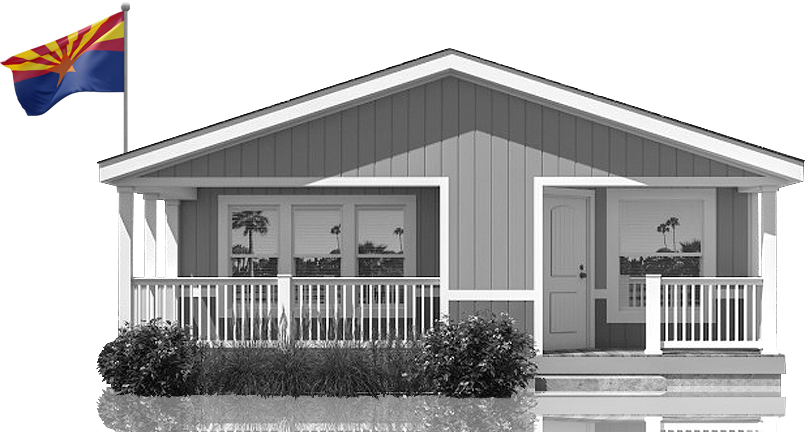Frequently asked questions


We’re here to help
Although we have an extensive knowledge base about manufactured home insurance, we share some brief answers here to the most common questions we’re asked. If you have additional questions that aren’t addressed here, please feel free to contact us for help.
What is homeowners insurance?
A homeowner’s policy provides protection for sudden and unforeseen damage to your home and will provide finanancial compensation for repairs or replacement to your property caused by such an occurance.
Will a homeowner's policy cover maintenance and normal wear and tear to my home?
No. Homeowner’s policies are designed to cover the “unexpected.” Routine maintenance and normal wear and tear to your home are your responsibility.
What is typically covered by a homeowner's policy?
The dwelling which includes the roof, walls, ceilings, floors, room additions, and permanently attached structures such as awnings, carport or garage.
Personal property is your “stuff.” Clothing, furniture, and appliances are all examples of personal property. Many insurers have special policy limits for jewelry, guns, electronics, art and antiques (some insurers will allow increases to the special limit items).
Adjacent or other structures will provide coverage for structures not permanently attached to your home.
Additional living expenses will pay a per diem for food and lodging in the event sustained damage to your home requires you to seek alternate living accommodations while repairs are being made.
Personal liability provides coverage in the event someone is injured on your property. The limit for personal property and adjacent structures covered is usually a percentage of the dwelling coverage. Additional living expenses can be 10% or 20% of the dwelling coverage. Liablility coverage can range from $100,000 to $500,000.
Can I make changes to my policy after it has been issued?
Yes. Endorsement to change or modify a policy can be made during the policy term. Changes of address, name, or coverage are examples of typical policy endorsements.
What is an “insured”?
The insured is the individual(s) or entity who has entered into the policy contract with the insurer.
What is “filing a claim”?
The insured makes a formal request to the insurance company after an incident has occurred.
When does the deductible apply?
When a claim is adjudicated, the deductible will be subtracted from the amount paid out by the insurer. Deductibles can be defined in a couple of ways. A flat deductible is a fixed amount paid each time you file a claim.
Example: Your home is insured for $100,000 and you have a $500 deductible. A hailstorm comes through your town and damages your roof. The adjuster identifies $5,000 of covered damage. The insurance company will pay out $4,500 on that claim.
A percent deductible usually applies to a specific line of coverage. Your out-of-pocket cost is based on a percentage of coverage.
An example of this type of deductible: Your home is insured for $100,000. You have a 2% wind and hail deductible. The roof sustained $5,000 of damage after a hailstorm. In this scenario your percent deductible is $2,000. The amount paid out by the insurance company would be reduced $2,000 equaling $3,000.
What does it mean to adjudicate a claim?
The insurance company will undergo a process to determine the allowable compensation as prescribed by the policy.
Is home insurance required by law?
No. However, if you have a mortgage, it is common for the lender to require you to maintain home insurance on the property. Some lenders will require a minimum amount of insurance coverage on your home which is equal to the amount of your loan. Keep in mind, however, quite often the loan balance differs significantly from the actual replacement value of the home.
Definitions
Policy Limits – the maximum amount paid out by the insurer for a particular line of coverage when a claim has been filed.
Line of Coverage – The insurance policy limits are highlighted on the policy declaration page. Each type of coverage is referred to as a “line of coverage” and usually has its own specific policy limit.
Declaration Page – A summary of what is included in the policy. Generally, the policy declaration will include the name and mailing address of the insured, the property address, deductible, policy number, policy period, policy premium, name and contact details of the insurance company.
Deductible – Once a claim is filed, the deductible is the amount you will be financially responsible for before the policy starts to pay. Often, the amount reimbursed by the insurance company is reduced by the amount of the policy deductible.

Points to consider
- Home insurance is not required by law. However, home insurance will likely be required if your home is collateral on a loan.
- Always remember to review your declaration page for accuracy when it arrives.
- Your lender will accept a copy of your policy declaration as proof of insurance coverage.
- Deductibles can range from $500 to $5,000. Available deductibles will vary with each insurer.
- Insurers generally offer premium payment options in addition to paying the full premium once a year.
- Premium payment installments usually have an associated service with each installment. The service fees will vary with each insurer.
- Claims can be denied if the damage is the result of a lack of property maintenance.
- Mold may be covered and the amount of coverage will vary with each insurer.
- AC units are not normally covered by a home insurance policy.
- Damage caused by infestation is not covered. However, if termites eat through the electrical lines and it causes a fire, fire damage may be covered.
Ready to get started?
We make it easy, because we’re experts and eager to serve you. We’re happy to discuss your unique needs, answer any questions you may have, help navigate the process so that it’s straightforward, and present you the best insurance options at the best price.
OR CALL 480-513-2126
if you prefer to speak with a live agent
